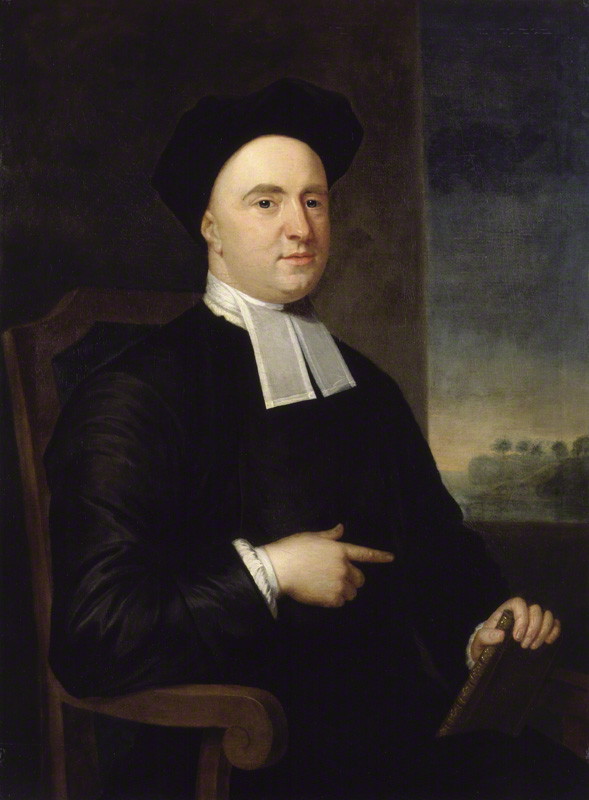Case Study 7: George Berkeley by John Smibert,1730
Rejecting the inscribed date, this example offers a new date for a portrait using the evidence of biography, artist’s style, background in the portrait, and the artist’s notebook.
“[John] Smibert’s portrait of Bishop Berkeley (NPG, 653), the distinguished theologian and philosopher. Traditionally the portrait is said to have been painted before Berkeley and Smibert left England for the Bermudas, in September 1728, as members of a party hoping to establish a college there.
The portrait was in the collection of the Rev. Kennedy, who is said to have been the curate of the sitter’s son (he is known to have been friendly with the family, and figures in their wills); after his death it was purchased from J. Winter of Maidstone by the Rev. Thomas Bowdler, who gave it to his friend, the Rev. William Josiah Irons; the latter presented it to the National Portrait Gallery shortly before his death in 1882.
A label, formerly on the back of the picture, in Bowdler’s hand states that the portrait was painted before Berkeley left for the Bermudas. A letter from Winter of 21 May 1840 (quoted in Arthur A. Luce, The life of George Berkeley, bishop of Cloyne, London, Nelson [1949], p.241-2) gives details of the portrait’s provenance, which are almost certainly correct. He also mentions strengthening the last two letters of the inscribed date, which he gives as 1725. The inscribed date and signature can now quite clearly be read as ‘John Smibert p./1728’.
Close examination of this inscription shows that is has been repainted, presumably at some period after its acquisition by the NPG. Clearly no reliance can be placed on it, or on Winter’s suggested reading of 1725. The style and background of the portrait itself seem to point to an American origin (i.e. post 1728). The glimpse of sea and promontory in the background of the portrait is suggestively like Paradise Rock in Rhode Island, and tallies with Berkeley’s description of Sachuest Beach in Alciphon (the book which Berkeley is shown holding in the portrait may possibly be a copy of this).
Smibert moved to Boston in November 1729, and Berkeley left Newport for England in September 1731; the two friends never met again. It seems probable, therefore, that the portrait was painted in America at some point between these two dates. Further evidence, in the form of an MS. notebook kept by Smibert, has just come to light in the Public Record Office. Smibert lists six portraits of Berkeley, including the group at Yale of 1729 in which he appears (Berkeley’s pose in this is quite different from the NPG portrait).
The NPG picture appears to be one of the half-lengths listed under 1730 and 1731. This confirms the evidence of background, and corroborates the new dating.”
RL Ormond, ‘The National Portrait Gallery archive’, Journal of the Society of Archivists, 4 (1970), 130-136)

